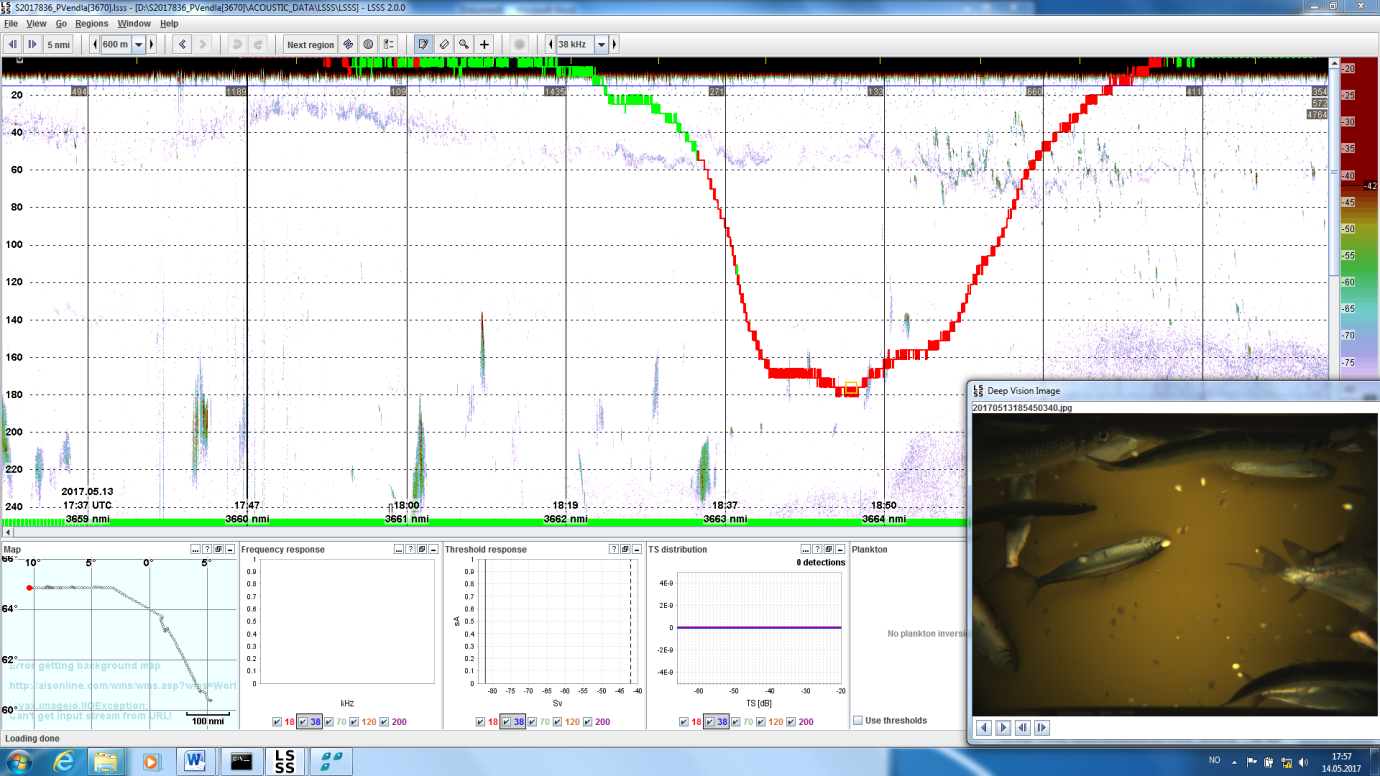REDUS cruise
The REDUS cruise took place May 10th to May 24th 2017 on the chartered fishing vessel Vendla. The objective of the REDUS cruise was to investigate potential bias in the International Ecosystem Survey in the Nordic Seas (IESNS) in May.
The potential bias sources that was investigates was fish avoidance, surface blind zones and allocation of acoustic backscatter between herring and blue whiting. Fish avoidance and survey blind zone was measured from a drifting upward looking wide beam echo sounder (WBAT, Kongsberg, Norway) and continuous recordings of seine sonar (Simrad SN90, Kongsberg, Norway) and fisheries sonar data (Simrad SX90, Kongsberg, Norway). The Deep vision system (Scantrol Deep Vision; Bergen, Norway) was used to validate the allocation of acoustic backscatter to species.

Figure 1. Trawl profile and images integrated with echosounder data in LSSS. The green and red line indicates depth of the Deep Vision. The image is from the deepest portion of the trawl track (indicated by orange square) and confirms that the schools at 140 m depth and greater are Atlantic herring.
The Deep Vision system was deployed on all trawl hauls (20 total) and the deplyments and integration with LSSS worked well. In addition to commercially exploited pelagic fishes (herring, mackerel and blue whiting), the system was also successful in recording the depth distribution of krill and mesopelagic fishes which were poorly retained in the trawl.
Figure 2. The WBAT deployment.
We completed several successful WBAT deployment experiments where we measured the fish distribution close to the surface. These data will be combined with the seine sonar and the fisheries sonar data to assess whether the sonars can be used to address the surface blind zone problem. The data also allow comparison between the vertical distribution from the vessel based acoustics compared to the buoys for avoidance estimates.
